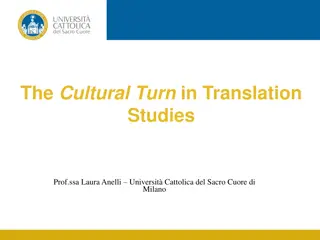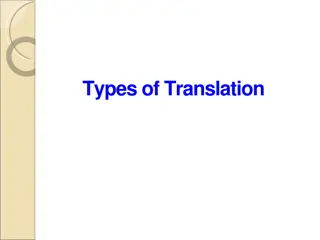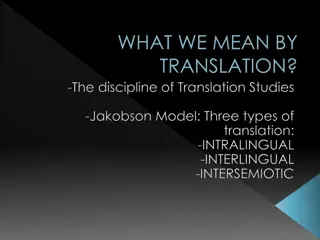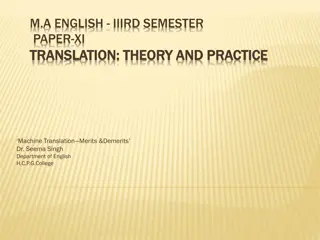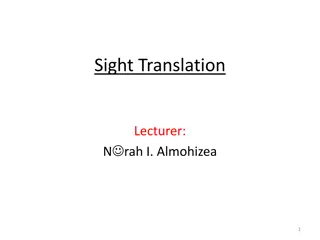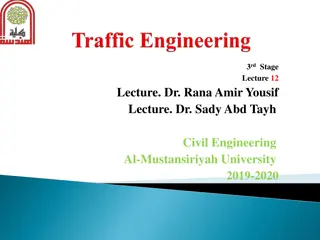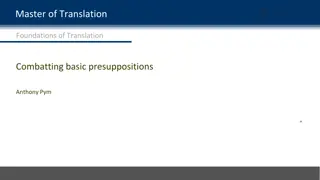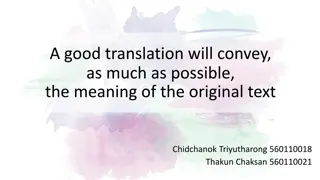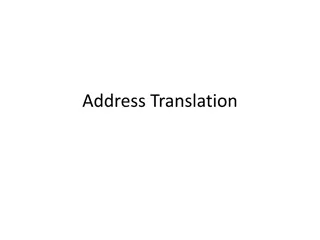Understanding Sight Translation: Processes and Skills
Sight translation is a challenging task that requires mental agility, language proficiency, and keen attention to detail. Interpreters must effectively process written text in one language and convey its meaning accurately in another language. This process involves conservation of register, comprehension of written material, prediction of text outcomes, and the ability to work across different writing styles. Developing skills such as complete command of languages, public speaking ability, and mental flexibility is crucial for successful sight translation in various professional settings like hospitals, courts, schools, and workforce environments.
Download Presentation

Please find below an Image/Link to download the presentation.
The content on the website is provided AS IS for your information and personal use only. It may not be sold, licensed, or shared on other websites without obtaining consent from the author. Download presentation by click this link. If you encounter any issues during the download, it is possible that the publisher has removed the file from their server.
E N D
Presentation Transcript
Sight translation is just as difficult as simultaneous interpretation and involves some of the same mental processes. The input is visual (written word) rather than oral (spoken word), but the interpreter still has to process a thought in the source language and generate the target language version of that thought while simultaneously processing the next source language thought, etc. Because the message is written in black and white, some interpreters may have more trouble focusing on meaning rather than words.
Elements of Sight Translation 1. Conservation: the interpreter should conserve the register of the source language text (complex vs. simple, formal vs. informal) 2. Written language: Written material is more densely packed with information than spoken language. Punctuation may serve the function of intonation.
3. Reading Comprehension: Interpreters must be adept at grasping the meaning of written texts and understanding the material explicitly and implicitly (interrelationships of ideas) 4. Prediction: Interpreters should be able to predict the outcome of an incomplete message and also be versed in the various writing styles legal documents, personal and business correspondence, technical reports so they can be alert to common constructions that may pose translation problems.
Skills required for sight translation Complete command of working languages at all levels of usage Good public speaking: voice projection, clear enunciation, good posture and smooth pacing Mental agility and flexibility in order to work on two channels at once (simultaneously processing the source language while speaking in the target language)
Settings for Sight Translation the types of forms and documents that may need to be sight translated in the following settings . Hospitals/Clinics: medical reports, waivers, consent forms Court documents: police reports, docs. of a case file, affidavits etc. Public/private schools: records Workforce: forms, reports




